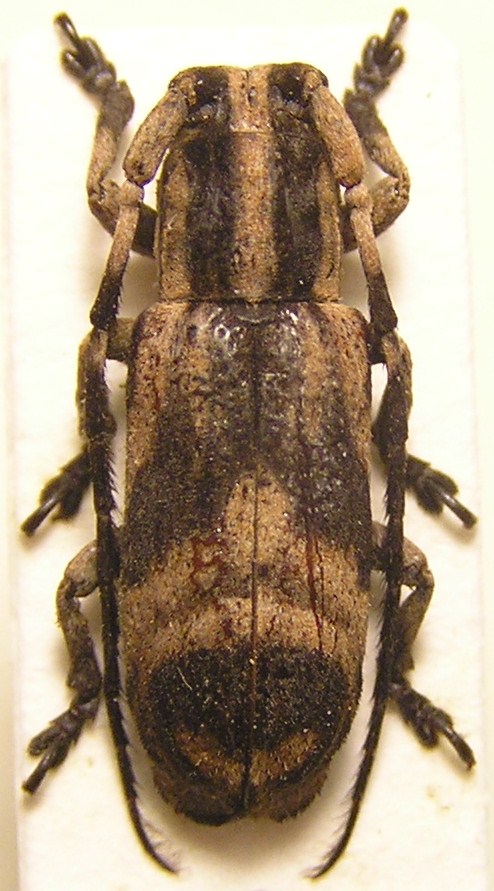| T O P I C R E V I E W |
| Robert |
Posted - 29/01/2013 : 08:44:35

Semble être l'espèce du post de Xavier, cette fois-ci de Bornéo.
Je relance donc ce topic.  |
| 7 L A T E S T R E P L I E S (Newest First) |
| Francesco |
Posted - 18/05/2020 : 10:41:44
Coming back to this case, the name quoted by Laporte de Castelnau is "Sthenias Dejean".
This name belongs actually to Dejean (1835: 344), who quoted two valid species, currently classified as Sthenias.
Both quoted species (grisator F. and cylindrator F.) are undoubtedly masculine.
|
| Francesco |
Posted - 02/01/2014 : 19:56:07
Coming back to this case, Castelnau's original description of Sthenias (here) included only S. grisator.
Thus, the genus is undoubtedly masculine.
|
| Francesco |
Posted - 02/02/2013 : 19:01:44
Thomson's original description is irrelevant since the scientific names should follow the Latin or Greek grammar.
In case of doubts, it is better to consult Gemminger & Harold, who clarified the origin and the gender of all genera known at that time.
This case is however questionable.
According to Gemminger & Harold, Sthenias derives from Sthenios, whose gender is masculine.
Nonetheless, Sthenias is not Sthenios, but possibly a Castelnau's misspelling.
Consequently, it is also possible to sustain that Sthenias is a completely invented word (neologism). In this case, the gender of a neologism is the gender the author gave. |
| dryobius |
Posted - 02/02/2013 : 14:40:38
The Palaearctic catalog uses "franciscanus". Tavakilian web site has "franciscana".
Thomson used "franciscana" when he described it.
Is Sthenias masculine, feminine or neutral?
 |
| Xavier |
Posted - 02/02/2013 : 12:31:28
S.franciscanus or S.franciscana ?  |
| Robert |
Posted - 29/01/2013 : 17:58:42
Ok, thanks! |
| dryobius |
Posted - 29/01/2013 : 15:03:06
Sthenias franciscanus Thomson.
The only Sthenias that I have seen from Borneo, sometimes a little variable. |


